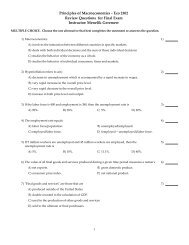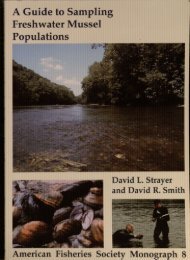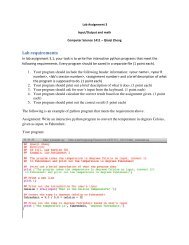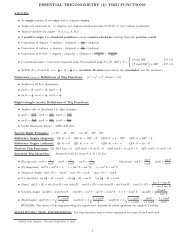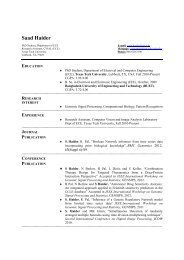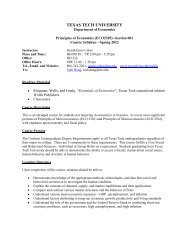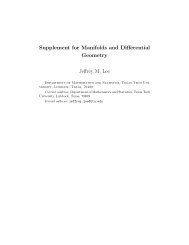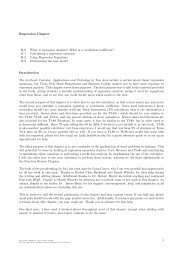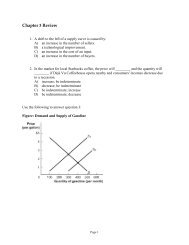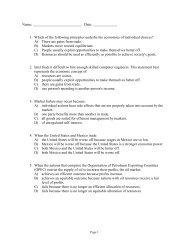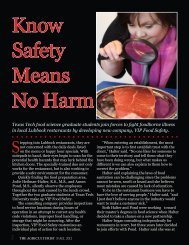Download - MyWeb - Texas Tech University
Download - MyWeb - Texas Tech University
Download - MyWeb - Texas Tech University
You also want an ePaper? Increase the reach of your titles
YUMPU automatically turns print PDFs into web optimized ePapers that Google loves.
The 2012 Season of the Chan Chich Archaeological Project<br />
Coba (Robles 1980), Colha (Valdez 1987),<br />
Cuello (Kosakowsky 1987; Kosakowsky and<br />
Pring 1998; Pring 1977), El Mirador (Forsyth<br />
1989), K’axob (Lopez Varela 1995), Kichpanha<br />
(McDow 1997; Meskill 1992; Reese and<br />
Valdez 1987), Laguna de On (Mock 1997),<br />
Nakbe (Forsyth 1993), Northern River Lagoon<br />
Site (Mock 1994), Oxkintok (Varela 1992), Rio<br />
Azul (Adams and Jackson-Adams 2000), Santa<br />
Rita (Chase and Chase 1988), Seibal (Sabloff<br />
1975), and the regional effort of the Programme<br />
for Belize Archaeological Project (Sullivan and<br />
Valdez 2000; Valdez et al. 1993). An important<br />
aspect of this analysis requires ceramic type<br />
descriptions that help to define the grouping of<br />
typological units that may then be defined into<br />
chronologically significant segments.<br />
The type:variety-mode system of analysis<br />
then allows for the ceramics to be used as a<br />
tool for chronological assessments which is<br />
usually of immediate interest to excavators.<br />
The chronological segments defined for Chan<br />
Chich and Kaxil Uinic are approximated from<br />
comparisons with other Maya sites with similar<br />
ceramics. Specific temporal designations may<br />
be later affirmed for Chan Chich with the<br />
results of absolute dating methods.<br />
The Ceramic Sequence<br />
Seven ceramic complexes are currently<br />
represented in the Chan Chich sequence<br />
(Figure 6.1) and a sequence for Kaxil Uinic<br />
is being considered. All of the complexes are<br />
functionally complete as defined by Adams<br />
(1971), however, the Early Classic period<br />
(Tzakol Sphere) is still a poorly represented<br />
complex. Late Postclassic visitations occurred<br />
at Chan Chich as is common at numerous<br />
other sites and represented thus far only by<br />
censer material. The ceramic complexes for<br />
the currently defined Chan Chich sequence<br />
are named after birds observed inhabiting the<br />
research area. It is believed that additional<br />
excavations will provide data to support and<br />
refine the general ceramic chronology as<br />
currently understood. Each season of research<br />
promises to allow for a refinement of the<br />
chronology through clearer definitions of<br />
ceramic types, complexes, complex facets, and<br />
comparative materials.<br />
Kiskadee Ceramic Complex<br />
Early Middle Preclassic, Swasey Sphere. The<br />
Kiskadee Complex is the earliest occupation<br />
evidence at Chan Chich thus far. The complex<br />
begins about 900 BC and extends to 600 BC<br />
and fits well, given the ceramic artifacts, within<br />
the northern Belize Swasey Sphere.<br />
Oropendola Ceramic Complex<br />
Late Middle Preclassic, Mamom Sphere.<br />
Dated to approximately 600 BC to 400 BC, the<br />
Chan Chich Oropendola Ceramic Complex is<br />
safely placed within the Mamom Sphere. The<br />
Mamom ceramic sphere is pan-Maya, but does<br />
maintain regional variations in certain ceramic<br />
characteristics.<br />
Jacamar Ceramic Complex<br />
Late Preclassic, Chicanel Sphere. A beginning<br />
date of 400 BC is designated for this ceramic<br />
complex at Chan Chich with an ending date of<br />
about AD 150. The Late Preclassic is generally<br />
extended to AD 250, however, a separate<br />
complex is posited for the following Terminal<br />
Preclassic period at Chan Chich because of<br />
the presence of Floral Park sphere ceramics.<br />
The Late Preclassic complex at Chan Chich is<br />
nearly identical in types and many varieties to<br />
other ceramic complexes of the same period in<br />
the Maya lowlands i.e., very uniform in shape,<br />
slip color, and surface treatment in this period.<br />
66



